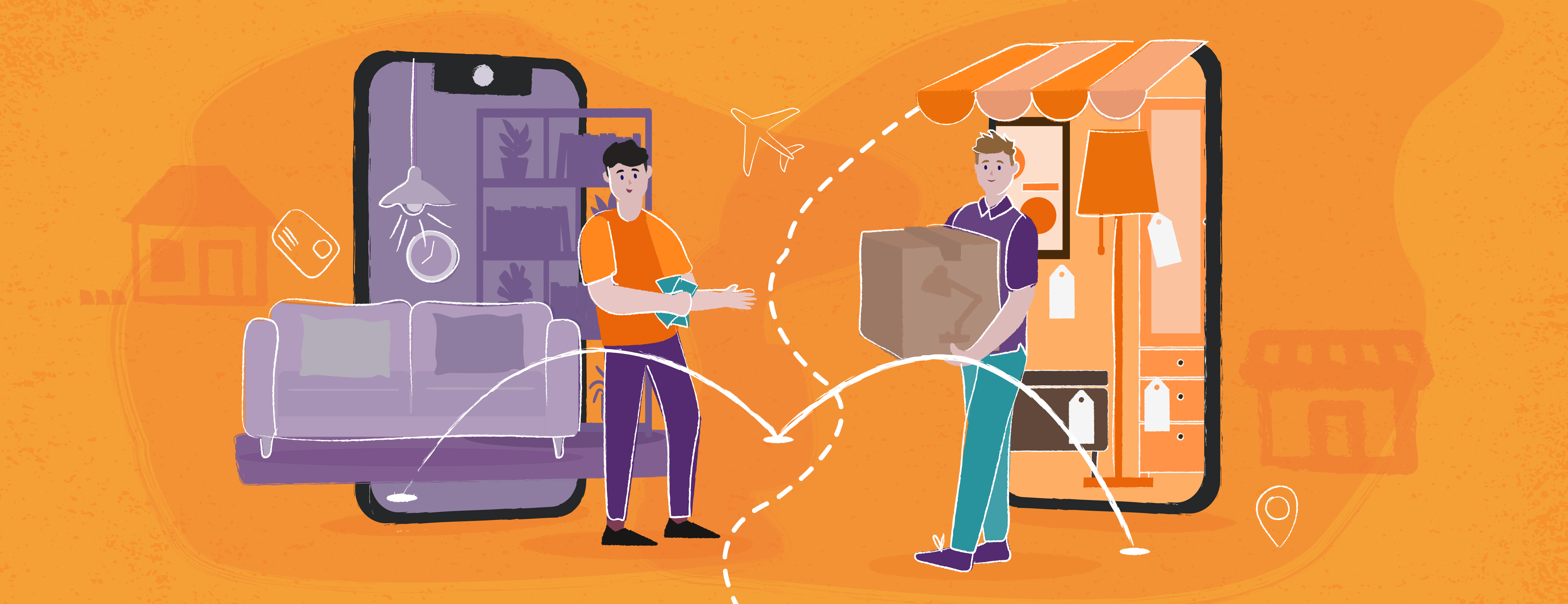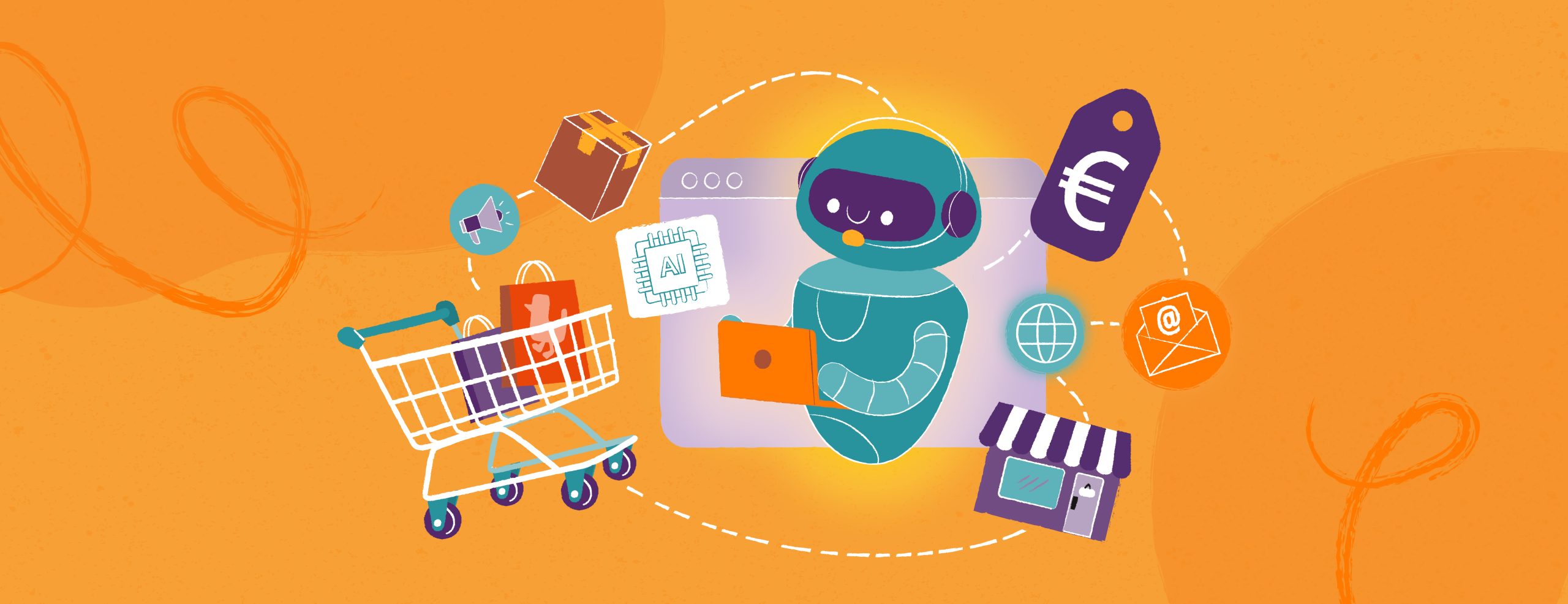Cross-Border E-Commerce / How to Get Started
The global e-commerce business has probably never been as global as it is today. A stable internet connection is the only passport we need to undertake a virtual journey to foreign markets. For customers, this brings great convenience and easy access to interesting offers while, for businesses of all sizes, it is an opportunity to reach customers on the other side of the world and carve out a piece of the global cake. Get to know cross-border e-commerce sales and find out what to do to be present on foreign e-commerce markets.
Content:
- What is Cross-Border E-Commerce?
- How Can You Implement the Cross-Border E-Commerce Model?
- Two Ways of Implementing Cross-Border Business
- E-Commerce Cross-Border Benefits
- Challenges of Cross-Border E-commerce
- Prepare for Cross-Border E-Commerce Sales
What is Cross-Border E-Commerce?
Cross-border trade occurs when buyers and sellers are located in different countries. Unlike traditional online shopping, which usually takes place within the same singular country or market, the cross-border e-commerce sales model transcends geographical barriers and enables businesses to reach global consumers.
Cross-border sales are also one of the most important trends in online sales for both B2B commerce businesses and B2C companies. For the latter, the global B2C cross-border e-commerce market is expected to reach $7.9 trillion dollars by 2030. For comparison, this value was approximately $785 billion in 2021.
As you can see, cross-border e-commerce is quickly becoming one of the most important elements of the omnichannel model and marketing strategies. It often provides additional channels for reaching new customers in foreign markets.
Consequently, it’s worth knowing that the scope of processes that need to be developed for cross-border e-commerce is very wide and includes elements such as orders, shipments, inventory, product information, offer customization and much more. Without these, it is difficult to start selling internationally.
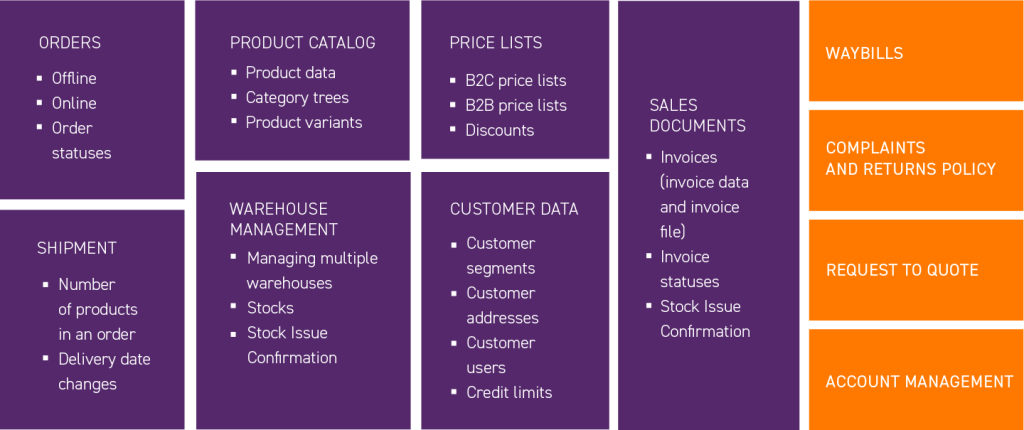
How Can You Implement the Cross-Border E-Commerce Model?
The first step in implementing cross-border sales is to identify a target market where there may be demand for your products. This needs to take aspects such as market size, trade restrictions, desired audience, culture and language into account, subsequently choose the countries that best suit your business.
Consider how you will handle the logistics and delivery of your products on a global scale. You need to adapt your logistics infrastructure to international shipments, consider cooperation with suppliers, solve storage issues, etc. It is also necessary to address verification systems to enable purchases, ensure a high level of customer service, and ensure efficient returns and complaints.
Two Ways of Implementing Cross-Border Business
The cross-border e-commerce model on global markets can be implemented in two ways – by selling in a foreign marketplace and/or using your own e-commerce platform adapted to a given international market here.
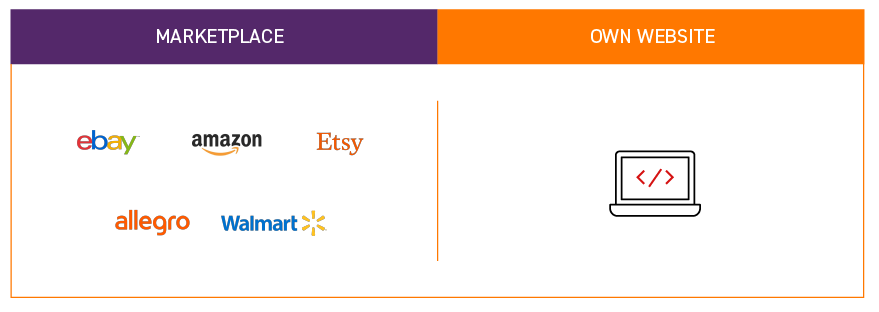
In our opinion and experience, it is best to start implementing cross-border e-commerce through local or international marketplace platforms.
This solution will enable your e-commerce business to test new international markets and check the interest in your products in other countries effortlessly and without incurring high business risk.
It will also be less expensive than investing in a new version of your online store. If the cross-border model implemented via the marketplace proves successful in a target market, the next step in development may be an international e-commerce platform fully adapted to foreign sales.
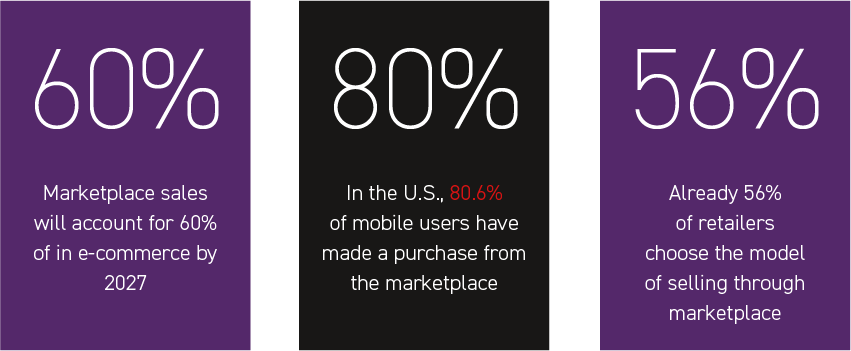
Source: Puls biznesu (12.22), Bizrate Insights (2022), PKObp (10.2022), Gemius (10.2022)
E-Commerce Cross-Border Benefits
There are many advantages to the cross-border e-commerce model that we can look at, including from both the perspective of both your business and the customers themselves. For potential customers, it is certainly greater availability of interesting and competitively priced products, and for business?
Benefits of cross-border expansion for business:
- Gaining independence from the domestic country local market
- Greater diversification of revenue sources thanks to entering foreign markets
- International trade without the need to engage huge capital
- New sales channels and the ability to reach more affluent foreign customer base,
- Increasing the margin on foreign markets, a chance for online business growth, higher revenues and dynamic development.
As you can see, it is worth fighting for presence in the international arena. However, you have to be ready to take on some quite significant challenges.
Challenges of Cross-Border E-commerce
Cross-border commerce involves numerous hurdles and potential problems that are worth taking a closer look at before you start your adventure with this model.
Understanding the Market
The first step is to run a market research. If you want to start selling via marketplaces, you should be aware that choosing the right platform is often an important factor determining the success of a given brand. Depending on your industry, it may be one of the popular marketplaces, such as Amazon, or a marketplace dedicated to a specific product segment, such as those emerging in the furniture and building materials sectors.
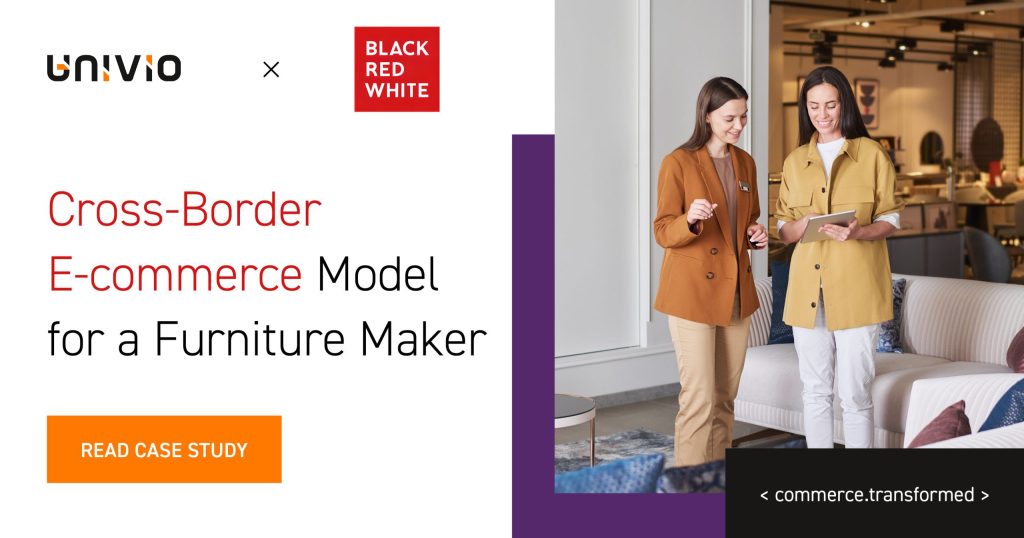
More and more such specialized marketplace portals are being created, so it’s worth keeping up to date with these developments in your industry.
Language Barrier
In the vast majority of cases, you’ll also need to deal with the issue of translating product descriptions. 87% of customers who are not fluent in English do not want to buy from websites that are only in English. With a large number of products, an interesting option to speed up the translation process to the local language may be to use generative AI such as ChatGPT, which can be trained in such a way that all descriptions are consistent and written in a similar style.
Regardless of which translation method you choose, it is crucial to organize all product information for different target markets and collect it in one place. Product information management (PIM) tools are useful for this purpose, which constitute a central repository of data about the assortment and enable easy and quick distribution of information to various online stores and sales channels. They also contain functionalities supporting the translation of product information for the global audience.

Payment methods
Currency conversion and payment methods are one of the most important challenges in cross-border purchases and international trade now. Different foreign currencies and exchange rate fluctuations can complicate setting a pricing strategy. However, companies that want to start cross-border e-commerce transactions must adapt to the different monetary systems and payment preferences of international customers. This is essential because consumers may be hesitant to purchase from a site that does not display prices in their local currency or does not offer familiar payment options.
The solution to this challenge is to implement advanced payment gateways that automatically convert currencies and offer a range of payment methods.
Digital tools like PayPal, Stripe, and Adyen offer multi-currency support and can process various local payment methods, from credit cards to region-specific options like Alipay in China or iDEAL in the Netherlands. Some companies manage currency risk by using services such as Wise (formerly TransferWise) to lock in exchange rates, thereby reducing the financial unpredictability associated with currency fluctuations. By implementing these solutions, companies can ensure a smooth payment experience, better customer experience and encourage customers to make purchases.
Tax and legal issues
Local regulations and customs issues always need to be addressed, and these may complicate the cross-border sales process. In the case of countries belonging to the European Union, online sales are much easier, thanks to the free movement of goods within the EU. It is enough for the particular product to be placed on the market in one of the Member States, as this means it can then it can also be sold in another European Union country. Of course, you still need to comply with VAT and personal data protection (GDPR) regulations.
When selling on the global market, outside the European Union, however, there are different tax laws and customs issues to deal with. Services such as Avalara and Thomson Reuters ONESOURCE are helpful here and make tax compliance tasks easier.
Logistics and international shipments
The time and costs of delivery, and thus customer satisfaction, depend on the appropriate preparation of logistics. Businesses must assemble a jigsaw of regulations regarding shipping, tax payments within required deadlines, and on-time deliveries.
To effectively deal with all of the above, companies rely on global shipping giants such as DHL, FedEx and UPS, which offer extensive logistics networks, experience in customs clearance processes and the ability for customers to track international shipments in real time.

It’s also crucial to offer a variety of shipping options, including express shipping for time-sensitive deliveries, and to provide clear information about delivery times and costs. Furthermore, you should consider using local distribution centers or fulfillment services to reduce transit times and shipping costs, making the entire process more efficient.
Customer Service & Returns Policy
When preparing for an international e-commerce sales, companies must ensure that customer service desk can accommodate cultural differences and respond to customers in multiple languages. This issue can be solved by employing multilingual employees and using AI chatbots.
It is also important to develop clear and accessible return policies to build the trust of new customers and encourage them to make purchases. Data shows that as many as 67% of customers check the returns policy before purchasing. Your returns’ policy should take into account not only basic issues such as time frames, return methods and shipping costs, but also local consumer protection laws.
Integration of Key Systems in the Company
Starting sales in the cross-border e-commerce business requires looking at several technical issues. Sales in a foreign marketplace need integration with key company systems, such as PIM, WMS (Warehouse Management System) or ERP. Such integrations make it possible to automate e-commerce sales processes or add products in various channels, including foreign ones. Customers also always have up-to-date information on product availability and prices.
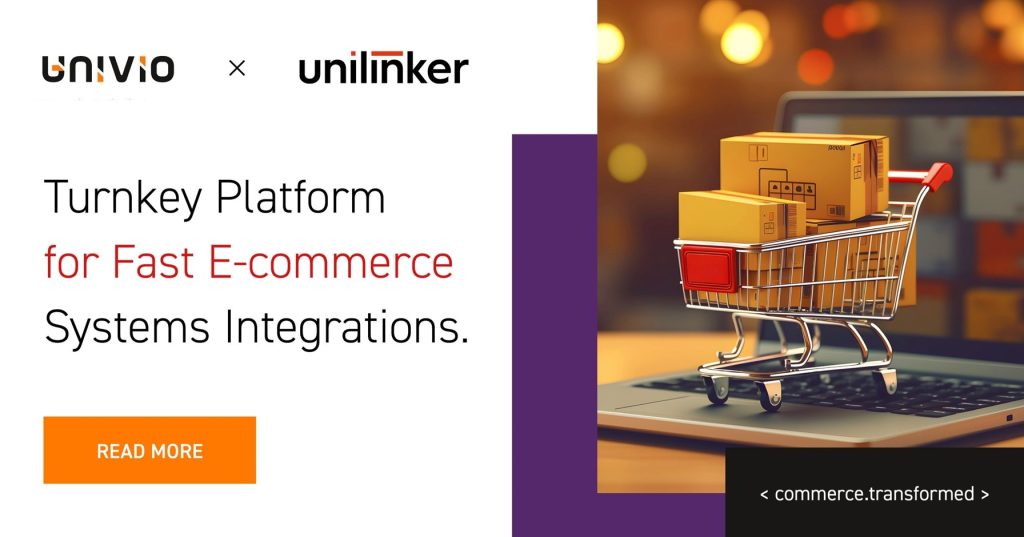
Modern integration platforms enable the quick integration of key systems, while also offering built-in mechanisms for catching potential errors.
Prepare for Cross-Border E-Commerce Sales
We are sure that the above description of challenges and tips has already inspired you to create a list of topics that you need to address in order to implement cross-border e-commerce in your organization. You already know that you need to ensure consistent product information in various languages, as well as logistic, legal and technical difficulties. To start, try to determine where you are in each of the areas we mentioned. What do you already have, and what are you still missing to develop international e-commerce? Which area is a priority in your case? What is a blocker, and what can help you get started? What, as an organization, can you do on your own, and where do you need external support?
Answering these questions is the first big step to starting e-commerce sales abroad.




